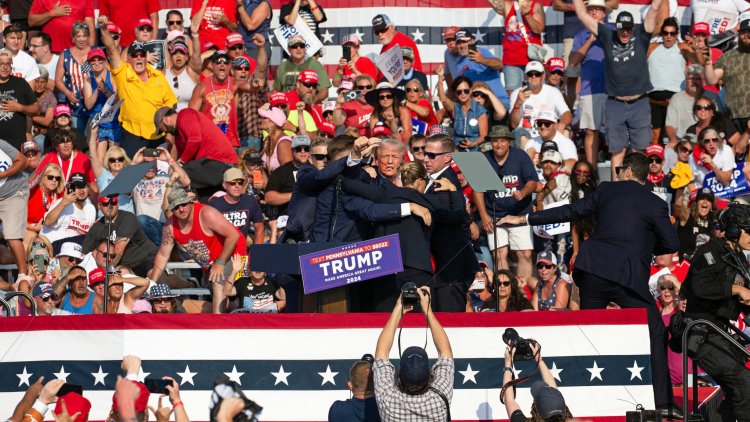A Failure of Security and Democracy
Political violence reveals deep cultural dysfunction, and that dysfunction is what our leaders must address.

The apparent assassination attempt on former President Donald J. Trump in Pennsylvania tonight brings home that democratic failures and security failures are intertwined.
Based on initial reporting, a sniper on a rooftop outside the venue—which people had to pass through a magnetometer to enter—shot at Trump, possibly grazing his ear with a bullet, before being killed by the Secret Service. At least one person at the rally was killed and two more were in serious condition.
Politicians and security experts, especially those focused on the upcoming conventions in Milwaukee and Chicago and future political rallies, must now reckon with the evident mismatch between what we know about political violence—it is pervasive and indiscriminate, according to the FBI—and how we plan for it.
In general, security experts focus on the particular target—a person, usually—and create a so-called perimeter around it. Some security layers are obvious, such as purse or backpack checks. Others are not supposed to be visible, such as plainclothes officers. But the reality is that, at some point, the security perimeter ends. We don’t yet know how sophisticated the shooter’s plan was, but he apparently knew where he could go without facing a pat down or firearm detection. His access would suggest that the security perimeter was too limited and too narrow.
[David Graham: A terrible new era of political violence in America]
We can argue about whether the security perimeter should include all rooftops near a rally. And we can argue about extending perimeters farther out from where Trump or President Joe Biden may be. But, again, the perimeter must end, and that will be where the vulnerability begins. Airports tightened the security process for boarding an airplane after the terror attacks on 9/11, for example; Islamic terrorists targeted the check-in area itself at the Brussels Airport in Zaventem in 2016.
The practical solution will be to increase safety and security protocols until the election, and probably even after. But it is misleading to believe that this will eliminate the risk. At best, it will reduce it. That is because the threat now is related to a core American activity: political expression through live campaign events and elections.
The motive for the assassination is not known yet. But regardless of motive, defending against political violence isn’t just about creating an adequate plan for a particular event. Political violence reveals deep cultural dysfunction, and that dysfunction is what our leaders must address. No security perimeter can shield our fractured democracy.
What's Your Reaction?




















